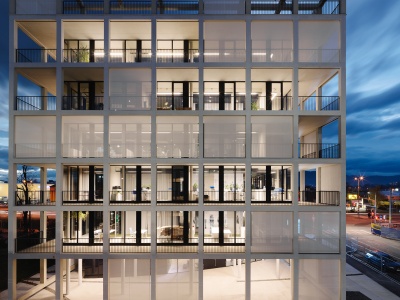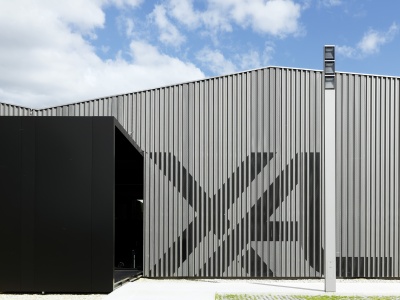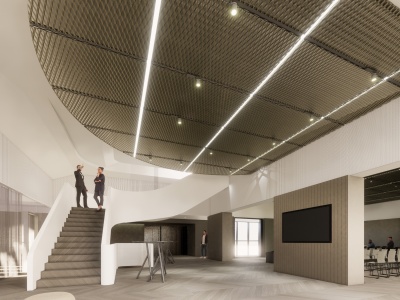OPEC FUND
RENEWING A HISTORIC BUILDING THROUGH INNOVATIVE OFFICE DESIGN AND SPATIAL PLANNING
- Interior Architecture
- Space Planning
- Interior Design
- Lighting Design
- Site Supervision
respecting the context of the site / preservation of the pre-dated structure / historic building / open office / reduced material selection / corporate architecture / company identity / green energy / sustainable building / human-centered design / biophilia / fractals / healthy work environment
The bourgeois Palais, located on Parkring, was completed in 1865 and is a building with the second-highest level of monument protection. In 2021, the OPEC Fund for International Development acquired the historic palace, which has been under monument protection since 1994, and had it extensively renovated from 2021 to 2024. The building's unique features include the first-floor area with its historic rooms, the original entrance via Zedlitzgasse, the new showroom on the Ring, and the new conference area on the top floor. Thanks to its static design, the building's structure allows for high flexibility in floor plans. Our holistic approach considers projects with "human-centered design" as the guiding principle. The design concept of the palace includes several elements derived from the historic building, translating OPEC Fund's corporate design into the built identity, with room-in-room solutions providing the opportunity to combine historical and modern elements. We chose historic elements like the arched doorways and implemented contemporary versions in our design. A key concept is the use of connecting elements across all floors, such as furniture and corridors, that serve to link individual functions horizontally and act as communication platforms. Along the corridors are coffee points, meeting rooms, copy and print stations, and chat boxes to support communication within the floors. This setup considers collaborative work and social aspects. The workspaces are designed with panels of different heights for individual work but allow direct communication with the surroundings. For concentrated, focused work, there are focus and phone boxes that serve as retreats and exclude communication with the surroundings. These boxes can also be used for video conferences and phone calls. Besides the technical requirements, the interior must also meet the needs of a new working environment like room acoustics, lighting, and various working options that are prerequisites for modern work. Employees must also be prepared for this new environment, so the design itself engages in a dialogue with the historic building. The combination and relationship between modern design and historical substance are crucial for revitalizing a historic building, which is one of the most sustainable measures. Any new construction, due to resource consumption, cannot compare to the renovation of an existing building. The latest computer-assisted building technology ensures a pleasant indoor climate with optimized energy consumption. The ecological footprint is a key criterion, while the spatial quality and harmony of the carefully selected materials, such as high-quality oak wood, create a feel-good atmosphere. Ultimately, it is the employees who should feel comfortable in their work environment and thus make a significant, sustainable contribution. The fractal patterns employed for the glass walls, focus cubes, phone boxes, and flooring in OPEC Fund's office in Vienna define the introduction of science-informed biophilic designs for the built environment. The fractal pattern designs, developed by Prof. Dr. Richard Taylor from Fractals Research/University of Oregon and 13&9 Design for the fractal library, offer diverse patterns for interior and exterior applications. For installations to be effective without altering the overall aesthetics of the space, patterns have been balanced to desirable levels of preference and engagement with relaxing and refreshing qualities. The results, published in a special edition on Biophilic Design Rationale in the journal Frontiers in Psychology, show the mid-complexity fractal designs to be very effective at balancing engagement, preference, refreshment, and relaxation qualities for a broad group of observers. Specifically, these patterns have the greatest agreement across individuals in terms of their preference, engagement, and refreshment while also maintaining relaxing effects.
- project name: OPEC FUND
- function: office
- location: Vienna, AUSTRIA
- floor space: 6.000 m²
- number of floors: 5
- construction start: 06 / 2022
- completion: 12 / 2023
- project team:
Jörg Kindermann, Oliver Kupfner, Lisa Nett
- photographer: Paul Ott













